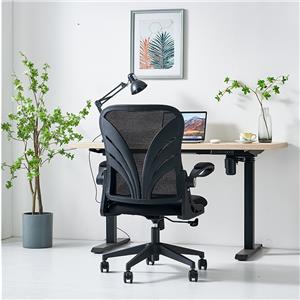Why do office chair lifting bases use more air rods instead of oil rods?
Office workers who sit in the office know that the chair lift in the office brings us a lot of convenience. So, do you know what are the principles of office chair lifts?
You know, there is still a lot of knowledge on the chairs we sit on every day, let's take you to understand it now.
Now many companies have prepared a liftable and rotatable office chair for the staff in order to make their work convenient and comfortable.
The reason why the office chair can be lifted is because there is a pneumatic rod in the lifting device. The pneumatic rod is an elastic element that uses gas and liquid as the working medium and can perform functions such as support, cushioning, braking, height adjustment, and angle adjustment. , the basic principle is that the interior is filled with high-pressure nitrogen gas. Since there is a through hole inside the piston, the gas pressure at both ends of the piston is equal, but the cross-sectional areas on both sides of the piston are different. One end is connected to the piston rod and the other end is not. Down, the pressure to the side with the small cross-sectional area is generated, that is, the elastic force of the air pressure rod. When a person sits on it and puts pressure on the lifting shaft, the lifting shaft will descend smoothly, with a uniform speed, and can be lowered to the lowest point without external force on the lifting shaft. The shaft rises back to the highest point, and this kind of gas spring can stop at any position in the stroke with the help of the release device, and there is a great locking force after stopping. the
Lifting devices are divided into 3 categories: hydraulic, mechanical and pneumatic. Most of the low-end lift chairs are air-powered. There is a cylinder in the pneumatic lift chair. The piston pneumatic rod in the cylinder moves up and down to support the lift of the chair. Regular manufacturers use nitrogen filling, the concentration is generally above 99%, and the pressure is 2. about an atmosphere. the
Working principle: The air rod is filled with high-pressure nitrogen gas, and there is a through hole in the piston. The gas pressure at both ends of the piston is equal, and the cross-sectional area on both sides is different. The lower end is connected with a piston rod. Force downwards, under the action of gas pressure, a pressure is generated toward the side with a smaller cross-sectional area, and the lifting shaft descends smoothly and at a uniform speed. When no downward pressure is generated, it will rise. When the height is adjusted, the lift shaft remains in its current position, neither compression nor tension can cause it to move relative to the outer sleeve.




